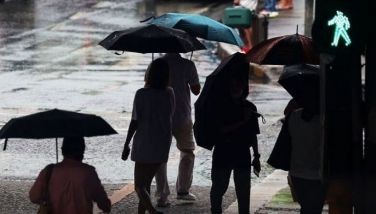UN recognizes S. Leyte town’s flood warning system
MANILA, Philippines - The municipality of Saint Bernard in Southern Leyte has been recognized by the United Nations for its German-supported early warning system that was developed and enhanced after a landslide there killed 1,354 people in 2006.
The Letter of Merit was presented during the Sasakawa Award ceremonies of the biennial Global Platform for Disaster Risk Reduction (GPDRR) conference in Geneva, Switzerland last May 22.
The GPDRR 2013 gathered 3,500 representatives of universities, international organizations, businesses and governments worldwide to discuss the latest developments in DRR, with the goal of improving its implementation through cooperation and better communication.
The award for Saint Bernard was presented by Yohei Sasakawa, chairman of the award benefactor Nippon Foundation, and Margareta Wahlström, special representative of the UN secretary-general for GPDRR.
Saint Bernard was nominated for the Sasakawa Award for a local flood early warning system (LFEWS) developed in partnership with the municipal government, the ACCORD project and the Philippine Atmospheric, Geophysical and Astronomical Services Administration since 2007.
From among 28 local government units, individuals and agencies all over the world entered in the contest, Saint Bernard was included in the shortlist of only five finalists feted at the GPDRR.
The LFEWS is a key element of disaster preparedness and resiliency efforts in communities. In Saint Bernard, it was cited for its enhanced capability for hazard warnings.
In particular, the UNISDR noted: “The system has two complementary aspects that work together to reduce the negative impacts of disasters: the use of technology and comprehensive social preparation. The system uses sustainable technology that already integrates tsunami and (experimentally) landslide warning, aside from warning for floods.â€
It added: “Recent innovations introduced with the support of GIZ include a simple and cost-effective public address system that has been adopted in 17 villages or barangays. The communications network has drawn communities closer, keeping them connected not only during emergencies. Vital information not only on hazards, but on community affairs as well, now reaches all households.â€
- Latest
- Trending



























